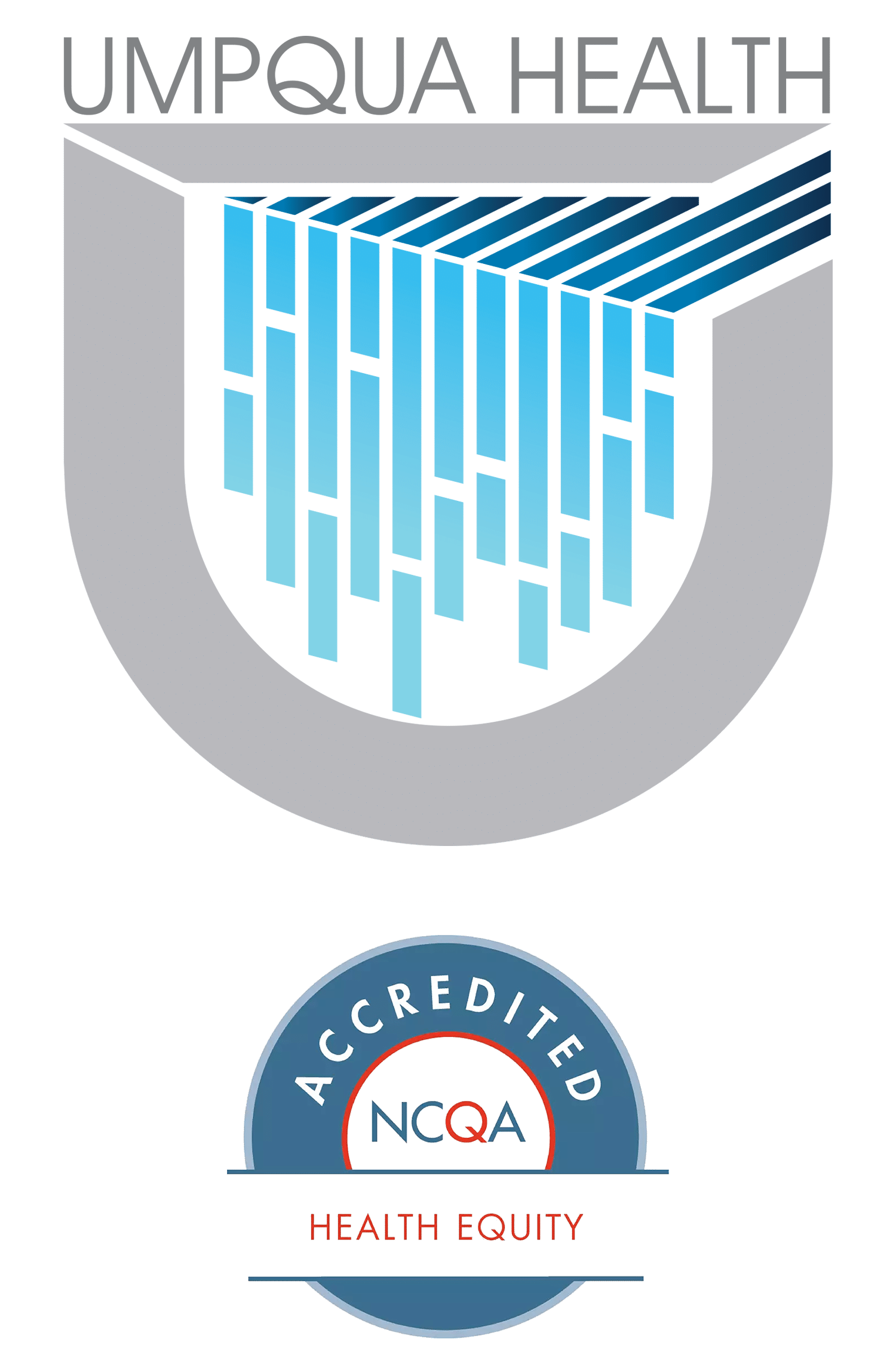Provider Newsletter May 2018
 Practice Tactics
Practice Tactics
Welcome to a new section of Umpqua Health Alliance’s provider newsletter. In this section, we’ll detail any changes that may affect practice management or operations. This month, we’ll take a look at changes to the Prior Authorization Grid for services starting July 1, 2018.
PA Grid Changes
Our quest for better performance and optimal stewardship of the funds provided by the state of Oregon for care of Medicaid members in Douglas County has led us to adopt changes to our PA process and claims adjudication to better comply with the mandates of the Prioritized List.
PA required for Dermatology
We have examined past claims for dermatology services and have determined that the Oregon Health Plan does not cover a significant number of these services provided. This led to the decision to (re)establish a requirement for prior authorization for dermatology services.
- Members (patients) seeking dermatology services must have an initial PA submitted by their PCP for a consult (one visit).
- Subsequent dermatology services for same condition requires a PA submitted by the consulting dermatologist.
- All services performed are subject to the Prioritized List (PL) for coverage; initial consults do not require a funded diagnosis for coverage, as long as it is considered undiagnosed at that stage (i.e. refer to dermatologist for R21 Rash and other nonspecific skin eruption, although not a diagnosis and not on funded line on the PK, is acceptable for consultation).
PA required for Procedures performed in the Office/Outpatient Setting (CPT 10000-69999)
We will be requiring PA for procedures performed in the Office/Outpatient setting, with a number of exclusions for common procedures so that practice workflow is not affected. This allows for a full application of the Prioritized List to these services. Of note, many of these procedures are frequently performed in the hospital or ambulatory surgery center, so are subject to PA requirement already.
The above changes to the PA grid are effective for dates of service on and after July 1, 2018. The revised PA grid is on the UHA website here. It includes appendices that lists CPT codes excluded from the PA requirement.
 Provider Services Forum Event
Provider Services Forum Event
Umpqua Health Alliance is excited to offer a forum event for all specialists and PCPs.
May 22, 12-1:15p.m.
Where: Umpqua Valley Arts Center
Topics: Changes to the PA Grid effective July 1, and insight on the HERC Prioritized List
All PCPs and Specialists are welcome to attend. Members of UHA’s Clinical Engagement team will be at the event to answer any questions you may have. The discussion will center around changes to the PA Grid that will go into effect July 1 of this year, as well as insight on the HERC Prioritized List. If you haven’t met some of the newest team members, this would be a great opportunity to connect with them. Lunch will be served, please contact Lorianne Heard for more information and to RSVP.
 Upcoming Provider Training Opportunities
Upcoming Provider Training Opportunities
Umpqua Health Alliance is proud to offer training opportunities to providers surrounding UHA Metrics. Two events are scheduled for June:
UHA has partnered with Douglas Public Health Network to sponsor an additional training:
UHA staff is planning additional training opportunities in 2018. If you have any questions about these or future technical assistance opportunities, please contact Betty Wagner.
 Medical Management
Medical Management
Choosing Wisely: Pre-operative Cardiac Stress Testing
This month’s topic has made the list of unnecessary procedures by seven leading medical societies:
- American College of Cardiology Don’t perform stress cardiac imaging or advanced non-invasive imaging as a pre-operative assessment in patients scheduled to undergo low-risk non-cardiac surgery.
- American Society of Anesthesiologists Don’t obtain baseline diagnostic cardiac testing (trans-thoracic/ esophageal echocardiography – TTE/TEE) or cardiac stress testing in asymptomatic stable patients with known cardiac disease (e.g., CAD, valvular disease) undergoing low or moderate risk non-cardiac surgery.
- American Society for Nuclear Cardiology Don’t perform cardiac imaging as a pre-operative assessment in patients scheduled to undergo low- or intermediate-risk non-cardiac surgery.
- Society for Cardiovascular Magnetic Resonance Don’t perform stress cardiovascular magnetic resonance imaging as a pre-operative assessment in patients scheduled to undergo low-risk, non-cardiac surgery.
- Society of General Internal Medicine Don’t perform routine pre-operative testing before low-risk surgical procedures.
- The Society for Thoracic Surgeons Patients who have no cardiac history and good functional status do not require preoperative stress testing prior to non-cardiac thoracic surgery.
- Society for Vascular Medicine Avoid cardiovascular testing for patients undergoing low-risk surgery.
Specialty Society Rationale
Noninvasive cardiac stress tests such as stress echocardiography, radionuclide myocardial perfusion imaging, and exercise/treadmill tests are used to assess a patient’s perioperative risk for major adverse cardiac events. Specialty society guidelines are nuanced in their recommendations for when preoperative cardiac evaluation should be performed, but in general state that testing may only be necessary for patients undergoing low-risk procedures if they have a serious cardiac condition or symptoms. Testing for patients receiving high- or intermediate-risk procedures may be necessary if they have certain risk factors, known cardiovascular disease, and limited cardiac functional capacity (Fleisher et al., 2014; Consumer Reports and American Society of Nuclear Cardiology, 2012).
Patients undergoing low-risk, non-cardiac surgery who do not have serious cardiac conditions receive no material clinical benefit from preoperative testing. Since the risk of major cardiac complications from non-cardiac procedures is so low, the results of the test are unlikely to affect clinical management (Fleisher et al., 2014). Preoperative stress imaging may also increase chances for false-positive test results and unnecessary follow-up testing that cause patient anxiety and may delay surgery. The cost of preoperative stress testing can also be significant.
By conservative estimates, such testing involves 82,000 to 190,000 Americans annually with the excess cost of this practice ranging between $81 million to $180 million.
In spite of general agreement across clinical specialty society guidelines on the appropriate use of preoperative evaluation, available data suggest that stress testing for low- and/or intermediate-risk non-cardiac surgery is an area of overuse, though estimates from the published literature vary significantly. One study using Medicare claims data from 1996 to 2008 found that among 74,785 beneficiaries with no diagnosis of a serious cardiac condition undergoing a low-to-intermediate-risk surgical, urologic, or orthopedic procedure, approximately 3,000 (4%) received a non-indicated preoperative stress test (Sheffield, et al., 2013). A retrospective study of 2009 Medicare claims data evaluating the prevalence of low-value services found that among a representative sample of approximately 1.4 million beneficiaries, between 4,000 and 9,500 (0.3% – 0.7%) of all individuals had pre-operative stress testing before low- or intermediate-risk non-cardiac surgeries (Schwartz, et al., 2014). The lower range excludes stress testing performed as part of inpatient or emergency care. When these results are applied to the entire Medicare population, an estimated 82,000 to 191,000 patients nationally were estimated to have received unnecessary preoperative stress testing.
Some studies have found higher estimates of overuse, including another retrospective analysis using Medicare claims data between 2006 and 2011 that found that among 300,000 eligible beneficiaries undergoing low-risk, non-cardiac surgery, approximately 50% received non-indicated preoperative stress testing (Colla, et al., 2014).
The costs of non-indicated preoperative stress testing can be significant. The Schwartz study estimated that annual Medicare spending on non-indicated preoperative stress testing ranged from $81 million to $180 million. These estimates do not include any costs associated with follow-up care prompted by preoperative testing, so the potential for cost-savings from reducing overuse may be higher.
We reviewed data from 2017 including the number of echocardiography, exercise treadmill tests, stress echocardiograms and radionuclide myocardial imaging studies performed within the network. Member clinical profiles were then examined within the EMR to determine the clinical indications for the studies. There were 280 cardiac stress examinations performed in the 2017 plan year. Of those, upon EMR review, 21% of the studies we deemed inappropriate based upon the criteria outlined by the seven medical societies that have published data on the appropriate use of stress testing in the pre-operative setting.
Factors Related to Overuse
| Patient Factors | Physician Factors | Payer Factors |
|---|---|---|
|
|
|
Opportunities for Improvement
| Opportunities for Improvement | Current Best Practices |
|---|---|
|
|
For more information on this topic, view the Choosing Wisely® Recommendation Analysis, located here.



